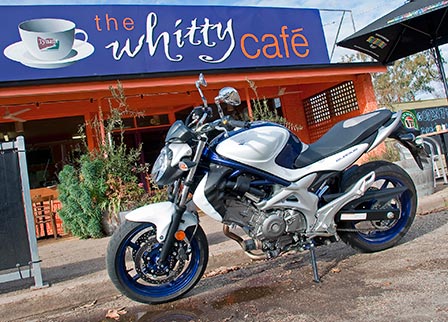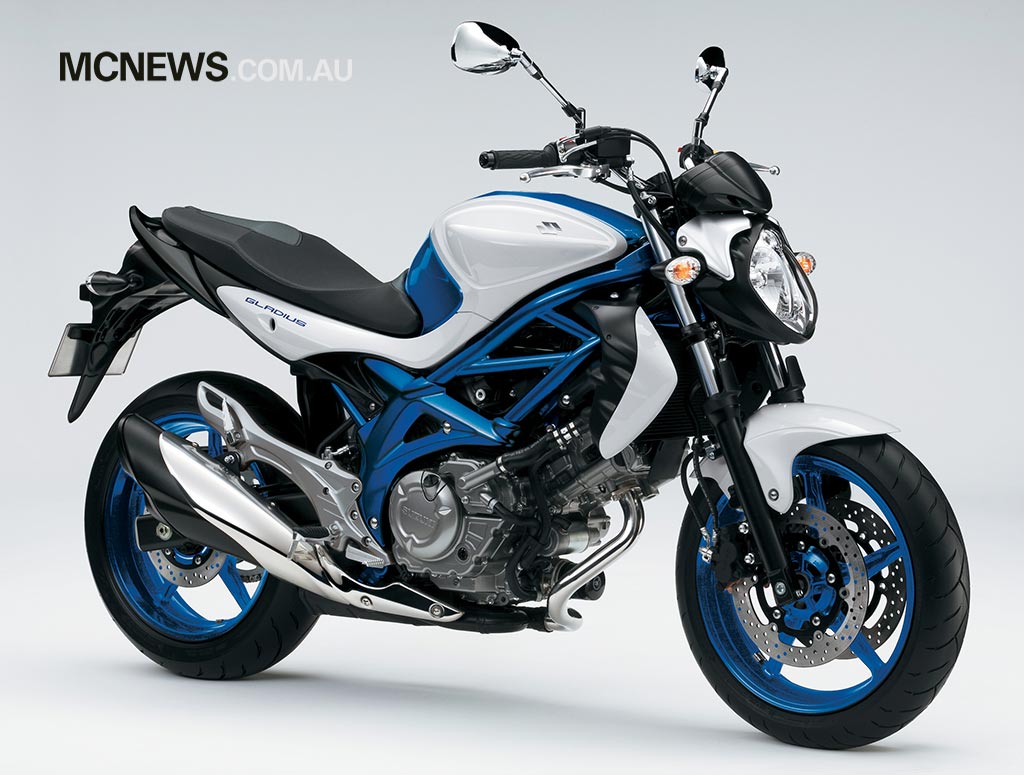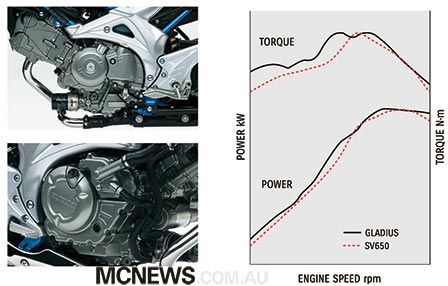Suzuki SFV650 Gladius Review
By Trevor Hedge
Gladius is the Latin term for sword. Suzuki chose that moniker for its more modern and somewhat funky take on their long running and hugely successful SV650 middleweight. Dynamically, the Gladius is not quite sharp enough to deserve being referred to as a sword, but it is a sweet ride. Pictured here on the right is the 2010 version we tested in the Victorian high country while lower down the page you can see the slight tweaks to the colour scheme for the 2011 model year but technically the machine remains unchanged.
Suzuki’s 645cc 90° V-Twin has proved successful beyond even their most optimistic bean-counter’s wildest dreams. In production now for well over a decade it has earned a place in modern motorcycling folklore. Big enough to offer a reasonable amount of grunt yet small enough to not suffer from the poor manners that a larger capacity would bring, it has proven a winning recipe.
The tweaked version in the SFV650 Gladius is by far the best yet. I am no stranger to this sweet little mill in all its previous incarnations but happily admit to being quite surprised at the pull of this latest example. Only after feeling that difference for myself did I seek the technical documentation from Suzuki on the model, as I was eager to find out what had been changed to give the Gladius engine the significant shot in the arm I had clearly felt from the saddle.

Suzuki’s changes include a heavier crank to smooth low speed running and accentuate the engine’s v-twin character. A switch to lighter valve springs, higher lift cams, dual-butterfly throttle bodies, different length intakes and exhausts for each cylinder, along with a new Idle Speed Control system that Suzuki is using for the first time, all add up to a significantly improved powerplant. And I say significantly improved not from the press kit, but from my time in the saddle. Suzuki have made a real step forward with this latest engine and the quicker it filters down to the rest of the 650 range the better.
Shifting cogs on the Gladius is a sublime experience. A smooth clutch, perfect shift throw and engagement make shuffling up and down the box an absolute pleasure. Lots of engine braking is evident on the Gladius which can be a boon in the hills but can also make things a little unruly if you get a little muddled and bang it down one too many gears.
The exhaust system may follow the same lines as Suzuki’s other recent muffler styling disasters but what it lacks in aesthetics it makes up for in acoustics. While being quiet enough to slip past the ADR noise meter it still manages to provide some aural pleasure, particularly on deceleration.
Clearly evident from my first stint on the Gladius was that it wore different brakes from its SV cousins. The front requires more effort at the lever than the SV bikes while the rear is much stronger. A smaller master cylinder and smaller pistons in the front calipers compared to the SV, while the rear brake is 20mm larger and easily overwhelms the available grip. A road worker emerging from behind a car with a stop sign prompted my first hard use of the stoppers and the back end of the Gladius was slithering and sliding from side to side as I came to a halt. Unfortunately Australia does not receive an ABS equipped Gladius. ABS at least for the LAMS version of the Gladius would be a very welcome feature.
The chassis includes a trellis frame suspended by preload adjustable 41mm forks and shock absorber. With three steps of the provided seven levels of available preload on the rear shock the rear suspension struggled to handle mid corner bumps while in the mountains. Adding more preload largely cured it but if taking a Gladius home for good I would also experiment with lowering the forks through the triple clamps to give a sharper feel. Overall the chassis is a little looser than I expected and is clearly designed more for comfort than outright sporting potential.
This is perhaps being a little critical as at this price point ($10,490) there is little that could stay with a Gladius on any stretch of public road and it certainly wouldn’t be too hard to convert into a more serious scalpel. This section of the market demands a good balance of performance, comfort and practicality and the Gladius does straddle these design criteria remarkably well. $500 at a good suspension shop would be money well spent for a rider that wants to push harder.
The instruments are clear and concise with a large conventional tachometer flanked by a bank of idiot lights on one side and LCD speedo on the other. A gear position indicator is also present. In this day and age of Stalinist speed enforcement it would be nice if the speedometer was a little larger and more centrally located to the field of vision.
Ergonomically the Gladius proves quite amenable. I found the saddle reasonable enough for a largely painless 400km afternoon. The small instrument binnacle seems to actually deflect some of the windblast and my Shoei ensconced bonce suffered no buffeting. A 785mm seat height poses no problems for those of average height but shorties might prefer something a little lower. The narrow girth will help the vertically challenged however. The mirrors work well and are largely devoid of vibration induced blurring.
Good grab bars are provided for the pillion and also double as secure anchor points for luggage. An optional top case mount adds to the luggage capabilities.
On a mixed highway and mountain run the Gladius returned 5.8 litres per 100km. Quite an admirable result as the engine and gearbox copped quite a workout on the tight cut and thrust that epitomises the well-worn run from Mansfield to Whitfield and back again. The fuel light illuminated after 190km and I squeezed 11 litres into the tank at Mansfield. With 3.5 litres still in reserve it would have made for 250km to empty. On the highway or in the city I am sure economy would fare much better extending the range further.
The Gladius comes in two versions. A full power unit, as tested, and a model eligible for learner riders through the LAMS scheme applicable in some states. The LAMS version has top end power restricted by the ECU in order to meet the learner specified power-to-weight ratio, but still offers some of the ripper bottom end torque of the full power engine. Unfortunately the hassle involved in upgrading a LAMS unit to full power is cost prohibitive and not quite as simple as an electronics tweak when you gain your full licence.
Both models are priced at $10,490 plus on road costs.


Specs – Suzuki SFV650 Gladius
Engine – 645cc, liquid-cooled 4-stroke 90° V-Twin
Bore x Stroke – 81×62.6mm
Transmission – Six speed, chain drive
Seat Height – 785mm
Wet Weight – 202kg
Fuel Capacity – 14.5 Litres
Average Consumption on test – 5.8 litres per 100km
Range – 250km+
Warranty – Two years
Price – Expect to pay $10,490 plus on road costs
Positives
+ Ripper engine
+ Great gearbox
+ Good value
Negatives
– Suspension could be improved
– ABS would be nice
– Some sexy bodywork would finish the picture























